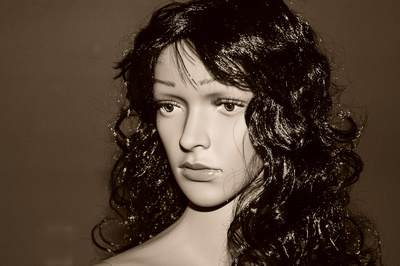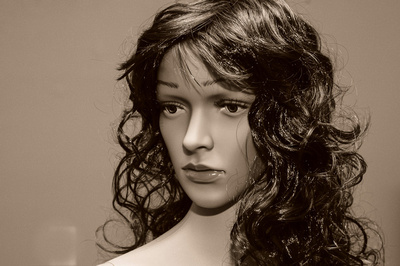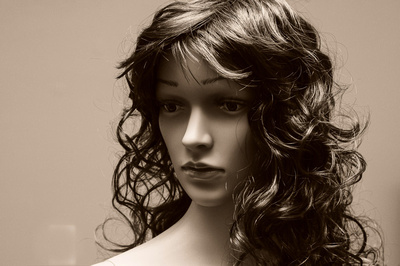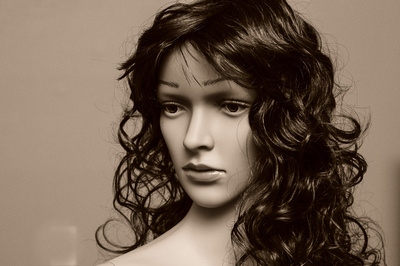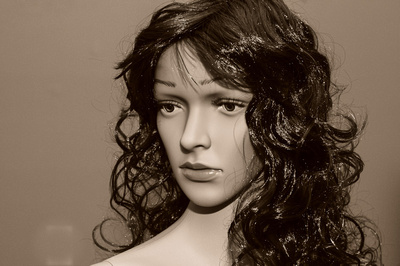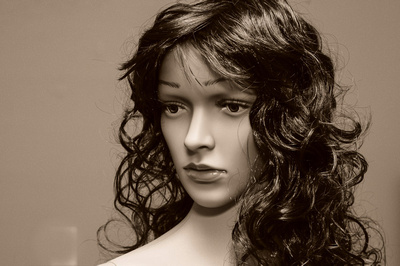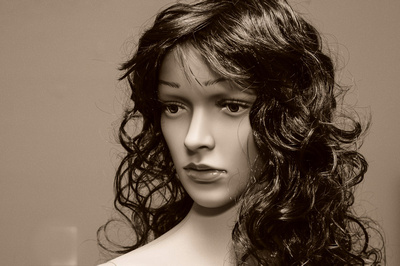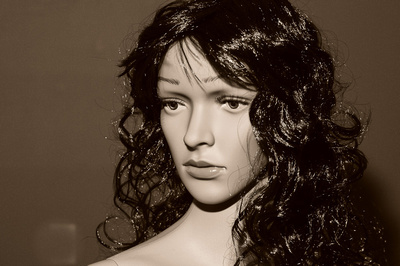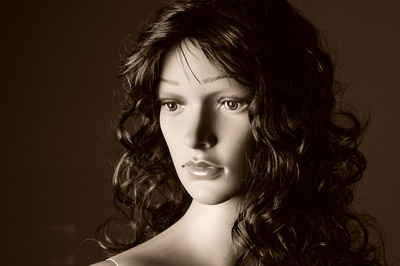On-Camera Speedlight Diffusion Methods Compared
Good use of off-camera lighting, including natural, will always be best in my book. Let's just say that on-camera flash is all you have. That doesn't mean you still can't get good light. There's a lot you can do to improve on-camera light and impress your friends or clients.
I've prepared a series of sample shots demonstrating on-camera flash techniques and modifiers. Before I go into technique, I'll explain the setup. I had a very compliant model. I set my camera to manual mode, ISO 800 (I thought I had it set at 200 but half way through the series I realized it was 800 and didn't feel like reshooting), 1/125 second @ f/5.6. Due to various modifiers and bouncing, flash was set to TTL -0.7 for every shot (compensation accounted for dark hair). I also used a tripod and manual focus on my 50 mm f/1.8G DX lens. I used the Nikon D300's Sepia 2 toning to eliminate color distractions and all of the shots are JPEGs out of camera.
Study the results carefully, looking for direction, softness, and catch lights in the eyes. Notice the changes in each sample. The background changes (due to falloff), as do the highlights, shadows, direction and catch lights. Each technique produces a different pattern of light, sometimes minor, sometimes major. Learn to see the differences and anticipate when they'll occur.
Techniques
The fundamental problem of on-camera flash is no matter what modifier you use, and in almost every bounce position, on-camera flash is almost always broad front lighting, the one thing professionals generally want to avoid. The look changes slightly, but it's still front lighting.
Traditional portrait lighting is off camera axis at about 45 to 90 degrees, which of course on-camera flash can't do. There's a way to solve this, and that involves side bouncing. When bouncing flash from the side, the mistake most people make is shooting the face straight toward the camera. This creates split lighting, with light on one half and shadow on the other, which is a result of not understanding lighting or posing. The key to side light is turning the face away from the camera in what's called a two-thirds view (the position shown in the photos). Then simply point the flash in the direction the face is looking, and the light will bounce back into the face and light across it, creating a more pleasing look. Of course, the other problem is the light will pick up whatever color it bounces off of, so make sure it's white, or you'll have to convert to monochrome to save the image.
Notice that side bounce is the only method in this series that mimics window light and produces pleasing catch lights. I threw in the soft box only to show why I like it better than all of the on-camera techniques. There's no comparison to on-camera flash and soft box when it comes to quality and control. Notice how the soft box sculpts the face and throws big beautiful catch lights into the eyes, and it prevents light from spilling onto cluttered backgrounds.
On-camera flash isn't always bad if used well. Sometimes it's all that's possible, in which case good use of bouncing or modifiers is better than direct flash. There are two ways I bounce flash: off of a side surface from the direction the face is looking, or straight up to the ceiling with a diffuser. Nothing else is worth the fiddling for me.
Diffusers
The market is so filled with products claiming to be the best diffusers, and everyone grasping for the latest and best diffuser, people lose sight of the biggest problem: No on-camera modifiers solve the problem of the flash being on camera. You're always going to have a bit of an on-camera look.
Stop expecting more of a diffuser on camera. It's not magic. It's a quick marginal enhancement of direct bare flash. If you're to the point where the only thing left is on-camera flash with a diffuser, understand that the best scenario is already out and what you're trying to do is get better photojournalistic flash, not beauty lighting. A diffuser is a diffuser is a diffuser. It's a great option C, D or E, but it'll never beat your A lighting.
That said, both the stock diffuser and Lightsphere produce good results, better than most of the other techniques, but not better than directional light. If you can tell the difference between the stock diffuser and the Gary Fong Lightsphere, let me know. This is the second test I've done where it hasn't really made a difference. The main thing I have noticed about the Lightsphere is it may produce slightly less specular highlights and softer shadows, but is it worth the money, weight and battery drain compared to the stock diffuser? I can't say I'd buy it again or recommend it, nor would I invest in any other diffusers for on camera.
The main problem I have with Fong's Lightsphere and Light_whatever products is not in how they work but in how they're presented. Early videos showed Fong comparing the Lightsphere to direct on-camera flash. Anything will be better than that. A more recent demo shows him comparing the Lightsphere to a bunch of diffusers and the camera is vertical so the flash is to the side, which is ridiculous as pros generally want to avoid shooting a vertical shot with on-camera flash pointed directly at the subject. The head would at least be pointed up or to the side to minimize the side shadow. Since the Lightsphere is omnidirectional, and Fong points it 45 degrees up, it's not tremendously important where it is in relation to the camera, so while it demonstrates that the Lightsphere can produce a better result in a bad position than most other diffusers, it's also only one position, one that many diffusers are not meant to be used in. The demo can't help but make the Lightsphere look better. I get it. The Lightsphere does its job. I just don't think it's that much better than the Nikon diffuser and some of the presentations could be more fair.
Summary
This is not a comprehensive overview of all on-camera methods and modifiers. I'm talking only about on-camera flash. Obviously off-camera flash is a whole different story and a variety of Speedlight modifiers and diffusers for that are worth exploring if you're serious about light. If you want the best light, learn about lighting and posing and look for directional, quality light. If it's not there, learn how to make it with artificial light. Get the light off camera when possible. When you can't, understand the limitations of small Speedlight modifiers, and understand the direction, quality and pattern you'll create before you take the shot.

